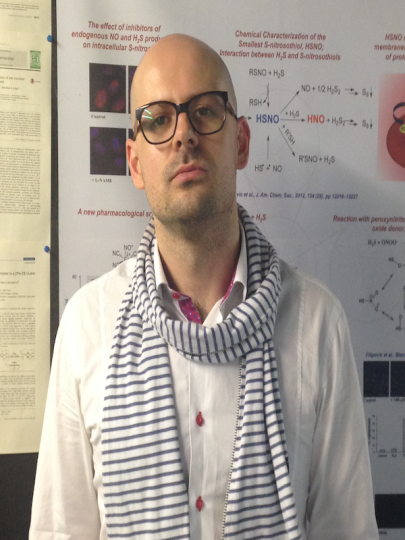Milos FilipovicInstitut de biochimie et génétique cellulaire (IBGC) CNRS / Université de Bordeaux
Mes recherches
My research career started at the University of Belgrade, where I finished biochemistry studies and got involved in the research of signaling by gasotransmitters. The keen interest for this topic was the reason for staying and pursuing PhD degree at the same University. For both diploma and PhD thesis I got several national awards. I then moved to Friedrich-Alexander University Erlangen-Nuremberg, first as a postdoc and then as a habillitand in the field of biological chemistry. German habilitation system gave me an early independence and helped me start my own research aimed at understanding the biochemical mechanisms behind the intracellular redox signaling. For the habilitation work/research, I received Emmy Noether prize. In 2015 I got a CR1 position at CNRS, ATIP Avenir grant and Idex Junior Chair grant from the University of Bordeaux, which allowed me to move and start my group at IBGC UMR5095. Since last year my team also carries “FRM Equipe” label, and is financed by Foundation for Medical Research. Starting from 2019, I am directeur de recherche 2eme classe (DR2) at CNRS. Our current work focuses on redox signalling, particularly on protein persulfidation and its importance for cell signalling but also for cellular protection, particularly in the context of aging.
Mon projet ATIP-Avenir
Mining the cellular S-sulfhydration proteome
Hydrogen sulfide (H2S) emerged as a critical cell-signaling molecule, involved in regulation of many physiological and/or pathological processes. It has been proposed that H2S signaling is mediated by a new oxidative post-translational modification (oxPTM) called protein S-sulfhydration (persulfidation). However, due to the lack of reliable tools persulfidation remains understudied. We developed the first selective method for persulfide labelling, which gives us a unique opportunity for the ground-breaking research in this field. Consequently this project would have three major goals: (i) improvement of the selective method for labelling of protein S-sulfhydration and global mapping of P-SSH in the cells; (ii) understanding of the mechanisms of P-SSH formation and the actual place of this oxPTM when compared to the other oxPTM, in order to gain high-resolution structural, functional, quantitative, and spatio-temporal information on their dynamics; (iii) understanding of how S-sulfhydration affects the structure, function and (patho)physiological role of certain proteins. We are confident that tackling these questions with our unique methodology will lead to the emergence of new H2S signalling pathways and to the pioneering discovery of targets for pharmacological therapy with H2S donors.
